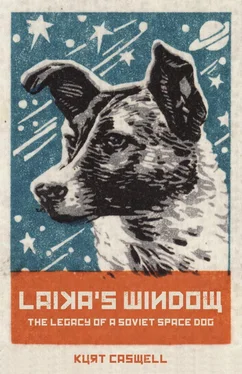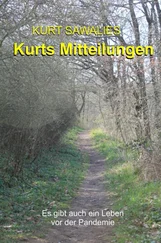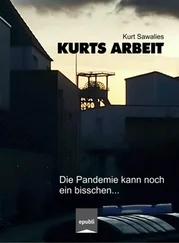As Sharik recovers from his wounds and settles into the good life, Philippovich reveals his sinister intent. He takes the dog into his medical lab, surgically implants a human pituitary gland in its skull, and then gives it human testicles. Sharik transforms into a man, but a poor example of a man, with the ill-beseeming behaviors of the low-life alcoholic from whom the organs were taken. As a result, Sharik turns Philippovich’s household upside down. He leaves a spigot on and floods the apartment. He attempts to rape a woman, one of the servants. He takes a disgusting job strangling stray cats for the state, their furs to become coats for Soviet workers. All this, and some trouble with the law for his strange experiment, prompts Philippovich to reverse the surgery, transforming Sharik back into a dog.
The novel is read as a satire of the New Soviet Man, Soviet communism’s insistence that the system would transform its male citizens into supermen, men who would no longer fall prey to their natural impulses but instead achieve self-mastery. One of the central characteristics of the New Soviet Man is a selfless devotion to the collective, which might manifest itself in the form of self-sacrifice. The New Soviet Man is willing to give his life for his nation’s cause or any cause furthering the glory of his nation. The novel was banned from publication in the Soviet Union but circulated illegally until 1987, when it was finally released. Heart of a Dog is now read and discussed widely in Russia and many other countries.
Like Sharik and the New Soviet Man, Laika is an experiment of the Soviet state, and she gives her life to that experiment. While we cannot say that Laika understood what was happening to her or that she chose to be a space dog, and while certainly she did not choose to be sacrificed, like most dogs she was devoted to her caregivers and trainers. What they asked of her, she did. Laika was selfless because she was a dog; it is humans who are selfish and self-serving, who ask animals to accept risk and danger in their stead. Fundamental to Laika, and the other space dogs, is her innocence. “Man, do not exalt yourself above the animals: they are sinless,” writes Dostoevsky in The Brothers Karamazov .
Much like Philippovich in the novel, Soviet scientists experimented with dogs, killing them and bringing them back to life. A 1940 film, Experiments in the Revival of Organisms , apparently filmed at the Institute of Experimental Physiology and Therapy in Moscow, features Doctor Sergei Bryukhonenko’s autojektor, a pump not unlike those systems used today in renal dialysis and extracorporeal membrane oxygenation. The film begins with a demonstration of the autojektor keeping organs from a dog alive outside the body, the heart and lungs, for example. Following that, the scientists reanimate the severed head of a dog, again using the autojektor to circulate blood. When a technician stimulates the eyes of the severed head, it blinks. An application of citric acid to the isolated head’s nose and mouth causes it to lick its lips. The head also reacts to bright lights and to sound, a hammer banging away at a table’s surface. Next comes the whole dog. Under anesthetic, the scientists drain the blood from a dog’s body. The dog dies and remains dead for ten minutes. They put a stopwatch on it. The scientists then pump the blood back into the dog and keep the pump running until the dog resumes normal heart and lung function. In time, the dog gets up off the table and resumes its life. The lab where these experiments were conducted, so the film claims, kept a number of dogs in residence, many of which had been previously killed and reanimated, with no visible ill effects.
Human beings are animals with a central anxiety that grows out of our knowledge of the limits of earthly life. Death, and our fear of death, is a source of deep and perhaps nearly insolvable loneliness. To be alive is to be at war with loneliness. Experiments like the reanimation of dogs rose out of a near worship of science and technology in the Soviet Union (and elsewhere) and made possible the hope for a future where human beings could mitigate the process of aging, even overcome it. Such experiments, writes Henrietta Mondry in Political Animals , “were perceived by the scientific community and the public alike as a step towards the possibility of immortality and resurrection.” Laika and the space dogs’ “journey to the stratosphere,” writes Mondry, “propelled them into the domain of celestial beings. It gave them immortality that could be understood metaphorically but also literally.” So too with Soviet cosmonauts, who are the embodiment of the New Soviet Man. After becoming the first human in space, Yuri Gagarin was awarded the title of Hero of the Soviet Union, the nation’s highest honor.
¤
Mukha, or Little Fly, served as the control dog for Laika. She might have served as Laika’s backup—the role Albina played—but the team felt she did not have the appropriate conformation. Her legs were too short, her body out of proportion. She was not a fitting symbol for the Soviet Union. How could such a homely dog become the darling of the world? So Mukha would stay on the ground, but as the control dog she would train no less vigorously. She would do everything Laika did in preparation for the flight. She would live in the same conditions. She would undergo the same training exercises. She would eat the same food. She was Laika’s shadow. The data collected from Laika during her time in orbit would later be compared to data collected from Mukha on the ground. Mukha would also test the life-support systems in Laika’s capsule before launch. If she could live sealed inside the capsule on the ground, then Laika could live sealed inside the capsule in space.
When the day of the capsule test arrived, Mukha went into the little slot where Laika soon would go, wearing the suit attached to restraining chains, and facing the window where that stream of light came in. For the next three days all of Mukha’s air, food, water, and waste elimination needs would have to be provided by the capsule.
Imagine that little dog sealed inside the capsule. How long before she got bored? Is “bored” even the right word for what a dog experiences in its mind? Agitated, sure. Restless, of course. Her stomach desperate for reasonable food, certainly. Even spiders in space (dining on filet mignon) were fed better than Mukha, and later Laika. A day passed. And another. Mukha seemed to be doing just fine, but she was not eating her food. It was probably hard to tell, however, peering in through the window at that lump of sticky goo in the feeding tray. Had she eaten a little of it? None of it? Half of it? On the third day one of the team members, Konstantin Dmitrievich, made a routine check and found Mukha in distress. He “looked inside the cabin through the window,” Ivanovsky writes in The First Steps , and “saw such sad dog eyes full of tears that he became uneasy.” The team made the call to bring her out. Once out, they discovered that Mukha had not touched any of her food, which meant that she would also have had no water. After nearly three days in the capsule she was severely dehydrated and possibly on a downward spiral toward death.
“It remained unclear how the doggy had lived these days,” writes Ivanovsky. Inside the capsule she “did almost nothing but breathe.” This was strange behavior for Mukha, who had always performed well during her training. According to Ivanovsky, some of the scientists and engineers made light of it, explaining that “short-legged Mukha was upset to learn that it was not her but long-backed Laika who had won a flight into space.” A humorous anecdote, to be sure, but the incident might better serve here as a warning, evidence that once in space, Laika would not fare much better. Ivanovsky notes that Konstantin Dmitrievich had a “rather serious conversation” with a colleague about Mukha’s trial run. They approached the problem from several angles: Mukha’s personality, a misunderstanding of dog psychology, the space dog food. The food had been prepared by biologists who assured the team that it was adequate. But how did it taste? What Konstantin Dmitrievich knew for certain was that Mukha did not eat, even after three days with nothing else to eat. So “why not just flavor this food with delicious sausage?” Ivanovsky writes.
Читать дальше












